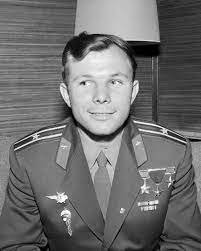More than a century ago, the famous Russian scientist, great dreamer, and realist, known as the “father of cosmonautics”, Konstantin Tsiolkovsky, wrote: “The planet is the cradle of intelligence, but one cannot always live in a cradle”.
Mankind left its cradle for the first time and looked out into the universe with the man who would be 90 years old today, 9 March 2024. His name and his smile illuminated the new epoch of the beginning of the conquest of infinity, where space is confused with time. Yuri Gagarin, the son of man, had finally entered the territory of the stars.
Some will surely say that he is nothing more than a propaganda symbol of the “evil empire”, that our ancestors should have been concerned with the products of mass consumption rather than the stars, and that our old country was “an example of how to do everything wrong”. Let them think what they like. Everyone who looks up sees the sky within.
Every moment of our lives is a web of signs and symbols, we have to learn to recognize and decipher them. Some illuminate our ever-shorter path, helping us search for answers and questions. In this sense, Yuri Gagarin is a symbol or an important companion.
Our Gagarin’s appearance in this world was not brought about by the magic of the media or the genius of character producers but was the result of a long and gigantic effort by generations of Soviets of different ages, professions, and nationalities. It became the embodiment of our collective dream, of wise ingenuity and faith in progress and human intelligence. Of that which one day had to leave its cradle.
His flight into space was a victory not only for Soviet science but for all the inhabitants of the planet, however many of us could understand it.
Yuri Gagarin was scientific and spiritual living proof of the success of the great folly of our communist project: to create a new man, with values, ethics, and behavior completely different from those inculcated and built by capitalism. That is why, for some, he will always be a stranger.
The story goes that once in class a student asked cosmonaut Valentin Lebedev: “But what was Gagarin’s achievement?” Lebedev sighed and replied: “Have you ever seen a 10-storey building? And when the answer was affirmative, he continued: “Well, well, imagine that the whole 10-story building is fuel. And at the top, you’re in a little balloon. At the bottom, they set you on fire with the words: ‘Don’t worry, Yuri, you’ll be back, we’ve calculated everything!

Russian Archive Online
In general, space projects were not only a sign of the technological development of countries, but also a reflection of the collective imagination of their citizens, who had an existential need to expand the horizons of their world.
But we know that from the time of the US presidency of the “cowboy” Ronald Reagan, the logic of “Star Wars” was imposed on humanity, using ideas that were contrary to our dream of a cosmos as a place of study, of meeting and cooperation between peoples, without weapons and any other terrestrial pollutants. It was part of the arms race to economically wear down the USSR, which had the luxury of having the world’s first cosmonaut.
I do not know if the young Soviet aviation major imagined the skies of these days, full of military satellites to guide drones and warplanes. I do know that Soviet, Russian, Ukrainian, Uzbek, Estonian, and many other children never saw ‘Star Wars’ and never imagined aliens as invaders or killers. All our fantasies about intelligent life in space were based on the existence of civilizations more advanced than ours, which would meet us and give us valuable knowledge.
We children of socialism still believed that with greater technological development would inevitably come greater ethical progress, whether for earthlings or aliens.
And speaking of aliens, in a circular of Russian and Soviet place names to be changed by the current regime in Kiev, the Ukrainian Ministry of Culture put Yuri Gagarin’s name at the top of the list, even above Pushkin, surely because he was more subversive.
I remember the photo of Gagarin taken about an hour after his landing. When his flight was the number one news story, uniting the entire planet and millions of people on five continents who had not yet taken to the streets to give a well-deserved welcome to the first cosmonaut and the first Soviet they had ever seen.
Behind his smile was a half-lost look, like that of someone who had just lived something impossible to transmit… as if he had returned from the other side of reality, deeply affected by the intensity and delirium of what he had experienced. His words at the time were: “The earth is blue, how wonderful… Inhabitants of the world, let us take care of this beauty, let us not destroy it”, a phrase that may seem like a slogan, but which was the expression of the intense mystical experience of those first human eyes that looked at us from afar.
If Gagarin can see us today from some corner of the mysterious universe, he certainly does not send curses to anyone, nor does he reproach us for the shame of these terrible and petty times. If he sees us, he will simply send us a calm and tired smile from a man who knows how to behave in any room and in any situation. He knows that we can. That we can make it all right again.










